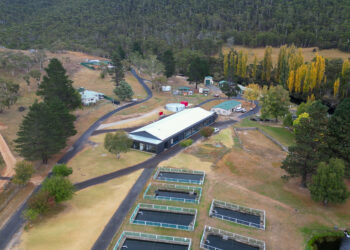
COULD the water regime in Gunbower Creek, Victoria, be managed to meet the needs of irrigators as well as the iconic Murray cod? That’s what a team of researchers from CPS Enviro, the Arthur Rylah Institute (ARI) and North Central Catchment Management Authority (CMA) wanted to find out.
“We need to get smarter and more efficient in how we manage water, to meet the needs of users, and the environment. Our new paper demonstrates that it’s possible, if you use the latest science, and if communities and government agencies work together closely,” Dr Ivor Stuart said.
Gunbower Creek, an anabranch of the Murray River, has historically been operated for irrigation efficiency; it’s a working river. Generally, the flow regime in working rivers and creeks is managed primarily for irrigation and opportunities for Murray cod recovery are not fully explored.
“Fortunately, our understanding of the flow conditions Murray cod need to thrive is getting better all the time, which means we are getting a lot more effective in how we provide water.”
We know that good populations of Murray cod exist in areas with three particular flow conditions: a steady spring flow to keep Murray cod on their nests, some areas of permanent fast flowing water, and higher winter flows for small fish.
These flow conditions maximise survival of juvenile Murray cod, including both locally spawned fish and stocked fingerlings.
Using this knowledge, water for the environment was added to the existing irrigation flows in Gunbower Creek to achieve the three flow conditions, without impacting on the needs of local irrigators.
This required a close collaboration of several organisations including the Goulburn-Murray Water and the North Central CMA. The extra water for Murray cod was largely non-consumptive and could be returned to the system.
“By monitoring Murray cod in Gunbower Creek for five years before, and five years after the change in management of water flows, we could assess if it could increase survival of both locally spawned and stocked fingerlings, and it did,” Dr Stuart said.
“We found many more juvenile Murray cod after the modified flows, which is a very encouraging sign, and these flows are now implemented annually.
This work can provide impetus for Murray cod recovery in other working rivers, such as the Goulburn, Campaspe, Loddon, Murrumbidgee and Edward-Wakool systems.
The paper, ‘From an irrigation system to an ecological asset: adding environmental flows establishes recovery of a threatened fish species’ by Stuart, I, Sharpe, C., Stanislawski, K., Parker, A., and Mallen-Cooper, M. (2019) published in Marine and Freshwater Research and can be accessed HERE.
You can read the full article on the North Central CMA website, and the Gunbower Fish Recovery Plan can be accessed HERE.
















